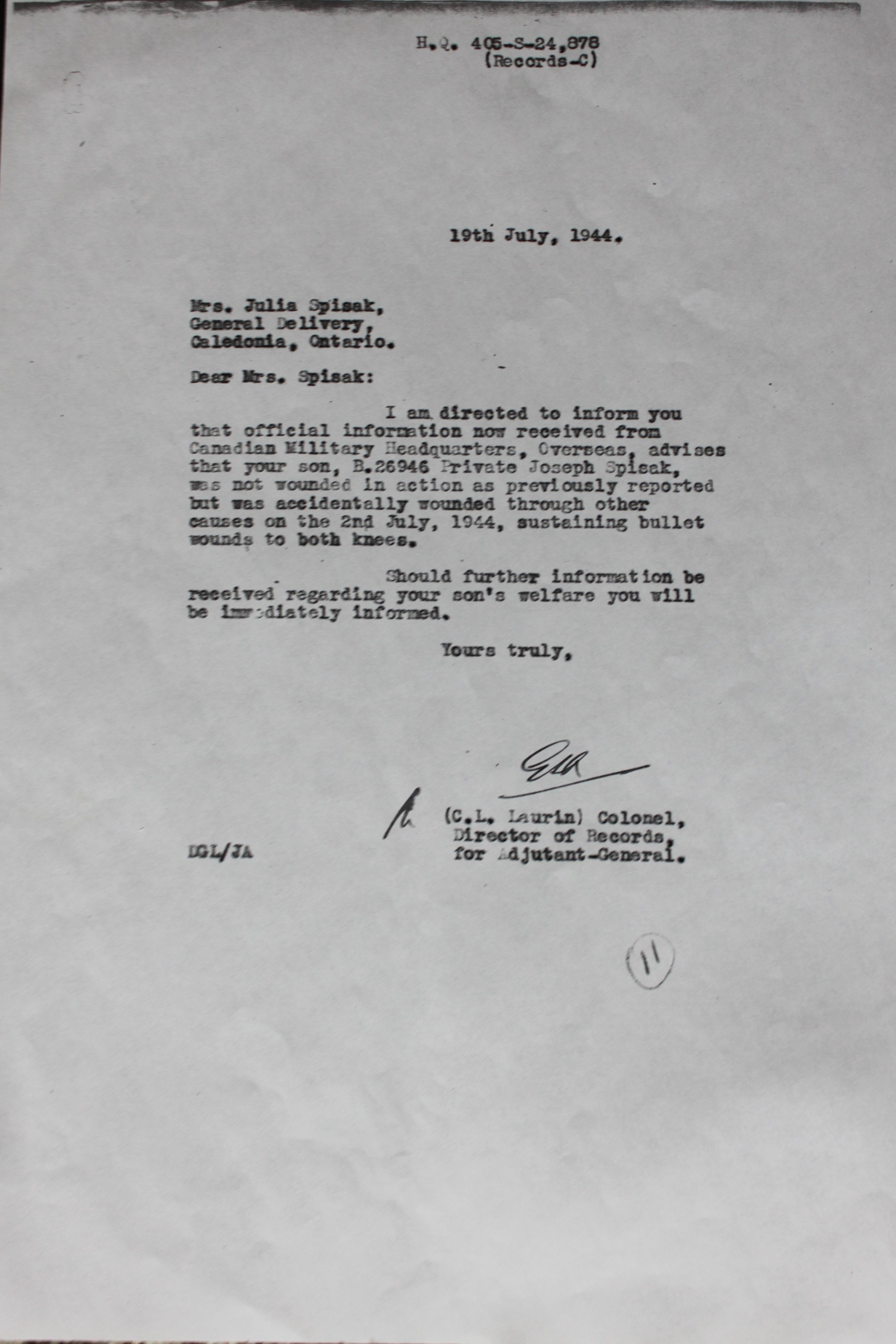PRIVATE JOSEPH SPISAK
Joseph Spisak Jr. was born in Hradiste, Czechoslovakia on October 13, 1920, to Julia and Joseph Sr. He was one of 5 children and left school after completing grade 9 in order to help support his family. Spisak was very athletic and participated in a variety of sports such as baseball, hockey and golf; he also enjoyed fishing. Spisak appeared to be a natural at everything he attempted and there seemed to be nothing he couldn’t do. He was also known to be a perfectionist and was very particular about details when it came to completing tasks. Prior to the war he had worked as a movie projectionist and had driven a milk truck.
Spisak volunteered for duty on October 27, 1942, and was assigned to No. 2 District Depot, Royal Canadian Engineers. It wasn’t long however before he turned his sights on becoming a paratrooper and he requested a transfer to the 1st Canadian Parachute Battalion. While undertaking the battery of testing required of Battalion applicants it was determined that Spisak had a very high IQ of 151, far in excess of the minimal requirement of 115. He successfully passed all tests and was sent to Parachute Training School at Fort Benning, Georgia. Spisak proudly graduated from the Parachute Course on February 19, 1943, and was transferred to Camp Shilo shortly thereafter.
In June of that same year, the Battalion was issued weapons and sent to Halifax where they boarded RMS Queen Elizabeth for their voyage to the UK. They disembarked in Greenock, Scotland and travelled to Carter Barracks at Bulford in the south of England. Joseph recalls they were immediately assigned to Brigadier James Hill’s 3rd Brigade within the 6th British Airborne Division. For the next 10 months, the Battalion trained hard in preparation for operations to follow, and also participated in the testing of new equipment that was being developed.
All that hard training was finally put into effect when the Allied invasion of France was launched, Operation Overlord. Spisak was assigned to a Vickers machine gun platoon and parachuted into Normandy on June 6, 1944. He would fight for the next 27 days before being shot through both knees at Le Mesnil. He wasn’t wounded by the enemy however; this was an unfortunate friendly-fire accident caused by his trench partner. With such a crippling injury, the war ended for Spisak right then and there. He was immediately returned to the UK for recovery and rehabilitation.
Spisak was released from the military on December 6, 1944, and returned to civilian life. He quickly obtained employment at Gypsum, Lime and Alabaster Limited where he worked as a Supervisor. Feeling that it was now time to settle down and raise a family he exchanged vows with Mildred Innis on November 21, 1945. They raised 3 wonderful children together and remained happily married until his death on April 11, 2002. He is resting peacefully beside his wife at Queens Park Cemetery in Calgary, Alberta.
Artifacts and information courtesy of Bob Spisak
Vickers Machine Gun
Below is a Vickers Machine Gun, Pte Spisak would have used a similar one overseas. It chambered a .303 British cartridge with a rate of fire at 450 – 500 rounds per minute with an effective range of 2,000 meters. It was usually employed by a 3-man team in order to carry all the parts and ammunition required. Due to the Vickers Machine Gun having the ability of such a long-range, it was employed to support the platoon at a greater distance from the enemy. Photographs courtesy of Arundel Militaria in the U.K.































